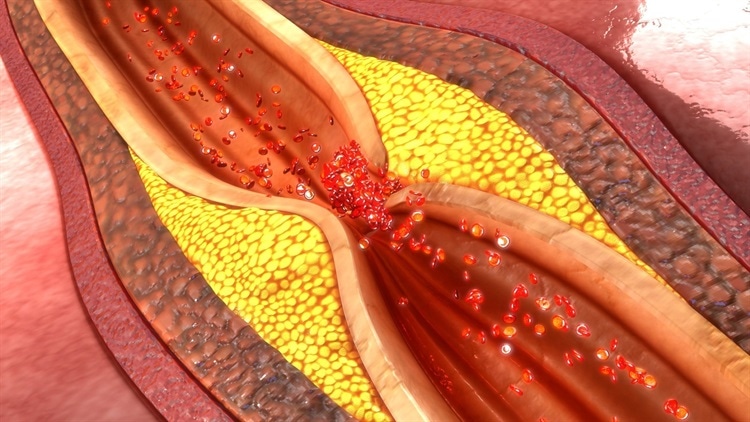Intense exercise encourages coronary artery calcification
Exercise and active work diminish the gamble of cardiovascular infection (CVD). It has been seen that a functioning individual is at a 30% to 40% lower chance of CVD. Be that as it may, past cross-sectional investigations have neglected to decide if practice altogether affects facilitating coronary atherosclerosis and plaque morphology. A new Dissemination diary paper has zeroed in on researching the connection between practice volume and force and the movement of coronary atherosclerosis in moderately aged and more established male competitors.
 |
| Intense exercise encourages coronary artery calcification |
Study: Exercise Volume Versus Intensity and the Progression of Coronary Atherosclerosis in Middle-Aged and Older Athletes: Findings From the MARC-2 Study. Image Credit: sciencepics / Shutterstock
Background
Coronary supply route calcification (CAC) is a biomarker for coronary atherosclerotic plaque weight and future gamble of CVD occasions. This biomarker can be estimated utilizing the processed tomography (CT) imaging. Likewise, a more nitty gritty investigation of coronary plaque morphology can be done utilizing Coronary CT angiography (CCTA).
Normally, competitors have CAC scores ≥100 Agatston units, connected to long lasting activity volume and force of activity preparing. In dynamic competitors, atherosclerotic plaque morphology has been viewed as more calcified or to some degree calcified. Likewise, ongoing examinations have demonstrated that novice competitors have higher coronary atherosclerosis contrasted with less dynamic solid controls.
About the Study
The ongoing review utilized CAC scoring and CCTA to assess the connection between practice preparing attributes and coronary atherosclerosis in moderately aged and more seasoned male competitors. This study conjectured that more noteworthy volume and exercise force are related with a higher rate of coronary atherosclerosis.
The current review is known as the MARC-2 (Estimating Competitors' Gamble of Cardiovascular Occasions 2), a development of the MARC-1 (Estimating Competitors' Gamble of Cardiovascular Occasions 1) study.
The MARC-2 review selected asymptomatic moderately aged and more seasoned men over 45 years old and showed no anomalies in their game's clinical assessment between May 2019 and February 2020. People who went through a percutaneous coronary mediation during follow-up were prohibited.
Important data about the activity qualities of the members was gotten through an approved poll. This poll focussed on gathering data about the sort of game, recurrence, length for each game (in years), term of an activity meeting, and level of execution, i.e., sporting versus cutthroat, of the review associate.
Your hip and low back are aching because...>> Learn More <<
A metabolic likeness task (MET) for all detailed games was doled out in view of the Summary of Proactive tasks. The ongoing review utilized practice volume, communicated in MET hours/week, during the review time frame.
Study Findings
The ongoing review incorporated a sum of 291 men. In view of the qualification measures, 287 men were at last remembered for the MARC-2 CAC examinations and 284 in the plaque investigations. It was seen that the normal development between CT examines was 6.3 years. Furthermore, pulse levels and the utilization of antihypertensives and statins had considerably expanded in the subsequent period. Notwithstanding, the cholesterol level of the members continued as before all through the subsequent period. Six members had additionally stopped smoking.
Practice force, however not volume, was associated with the movement of coronary atherosclerosis. The effect of enthusiastic activity was viewed as less powerful in CAC movement; in any case, extremely vivacious activity was related with a more huge movement of CAC and plaque (calcified). This finding is in accordance with cross-sectional MARC-1 perception that uncovered explicit activity powers quickly improve the advancement of calcified plaque.
Practice with an exceptionally elevated degree of force has been related with the development of calcified plaque, which proposes that specific systems might be associated with working with coronary atherosclerosis in competitors. For example, higher-power practice produces higher catecholamine levels, which can expand a singular's pulse and circulatory strain. As per past examinations, expanded pulse speeds up atherosclerosis, conceivably because of the expanded recurrence of fierce blood stream.
No relationship was found between practice volume and the movement of coronary atherosclerosis during the development. The finding of this study is in accordance with past examination, which uncovered that 74% of sporting competitors had no huge distinction in practice volume between people regardless of movement of CAC after 4.1 long stretches of follow-up. Conceivable activity volume is related with coronary atherosclerosis inception yet not with its movement. More examination is expected to decide the distinctions in atherosclerosis in light of activity force, i.e., inside the different gatherings (running and cycling).
Conclusions
Over the 6-year follow-up period, practice force was related with the movement of coronary atherosclerosis, yet not practice volume. It is important that extremely vivacious power practice was related with fundamentally higher CAC and calcified plaque movement, while incredible force practice was related with less CAC movement.

Comments
Post a Comment